The Swiss Cheese You Didn’t Expect: All About Gruyère Cheese in 2025
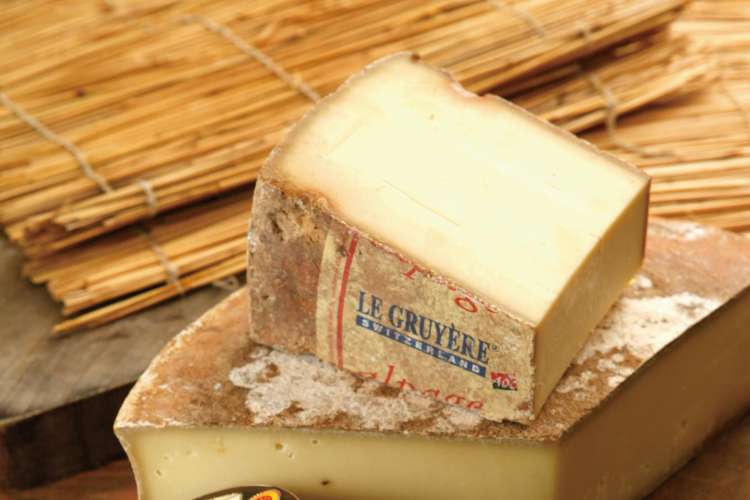
If you’re a cheese lover, you’ve probably already tasted Gruyère cheese in classic dishes like croque monsieur, fondue or French onion soup. But what exactly is Gruyère? Why does it work so well in so many dishes? Let's take a closer look at this fancy-sounding cheese, including recipes, its history and tips on where to buy it. Check out our list of the best types of cheese for a comparison.
Jump to Section
- What Is Gruyère Cheese?
- How Is Gruyère Cheese Made?
- U.S. Gruyère vs. Swiss Gruyère
- Type of Cheese
- Uses for Gruyère Cheese
- Recipes With Gruyère Cheese
- Gruyère Cheese Pairings
- Health Benefits of Gruyère Cheese
- How to Make Gruyère Cheese at Home
- Where to Buy Gruyère Cheese
- Gruyère Cheese FAQs
What Is Gruyère Cheese?

Gruyère is a firm, yellow cheese that originates from the town of Gruyères, located in Switzerland’s Fribourg region. The cheese has been around for centuries, with roots tracing all the way back to 1115. It’s made in a few key Swiss areas: Vaud, Fribourg, Neuchâtel, Bern and Jura. The name “Gruyère” actually comes from the Swiss French word “grue,” meaning crane, which dates back to Medieval Latin “Gruerius.”
In 2001, Gruyère was granted the AOC label, which ensures its quality and origin. This label was updated to AOP in 2011 across Europe, but the goal remains the same — to protect the cheese's traditional methods and regional authenticity. Gruyère is typically made from whole cow’s milk and is usually aged for at least six months.
How Is Gruyère Cheese Made?

Collecting the Milk
Gruyère cheese is made using careful, traditional methods that have been passed down for generations. It all starts with fresh milk from cows, which are milked twice a day. The evening’s milk is left to set overnight, and in the morning, it’s combined with the fresh milk from the next milking.
Heating the Milk
The mixture is poured into large copper vats and gently heated, using a mixer that mimics the traditional stirring motion of cheesemakers with wooden paddles.
Stirring the Curds

Next, cheesemakers add cultures and rennet to the milk, which helps it thicken and form curds. As the curds begin to form, the stirring tool is replaced with a special cheese cutter. The temperature in the vats is then gradually raised, and cheesemakers check the texture and size of the curds by hand, a skill that takes years to perfect.
Cooking the Curds
Once the curds are just right, they’re gently cooked further, which is why Gruyère is considered a “cooked cheese.”
After cooking, the curds and whey are transferred into molds, allowing the whey to drain out while the curds take shape. Each wheel of cheese is then marked with a special stamp indicating where and when it was made.
Brining the Cheese
The cheese is pressed in the molds for 18 to 24 hours. Once it firms up, it's removed from the mold and soaked in a salty brine bath for about a day to enhance flavor and texture.
Ageing the Cheese
After brining, the cheese is transferred to an aging room where it’s regularly brushed and rubbed with salt for about three months. This helps develop its rind and flavor. Once this initial aging period is complete, each wheel undergoes inspection by the AOC regulatory group before it can continue aging at a maturation facility.
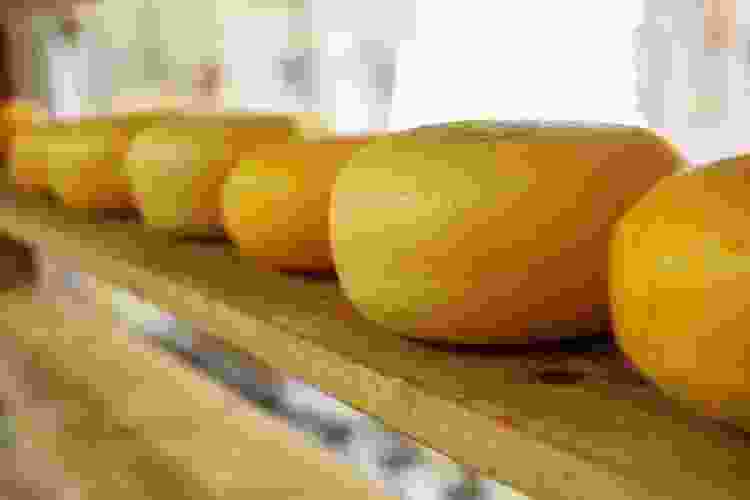
Gruyère wheels can be aged for as little as five months or up to a year or more. Younger Gruyère has a rich aroma and a mild nutty flavor, while older versions, aged for 10 to 18 months, develop a deeper nuttiness with a subtle hint of spiciness and an even smoother taste. As it continues to age, the flavor deepens, becoming firmer and earthier.
U.S. Gruyère vs. Swiss Gruyère
Swiss Gruyère and U.S. Gruyère differ slightly in production methods, which results in distinct flavors. Swiss Gruyère uses raw milk from cows that graze in the Alps and the cheese is aged with special cultures to boost flavor, usually for a full year.
In the U.S., cheesemakers often use pasteurized milk and usually age their Gruyère for just a few months. The result is a slightly different taste and texture, but American-made Gruyère is still delicious in its own way.
Type of Cheese
Gruyère is a firm cheese that's great for cheeseboards and charcuterie boards, but it really shines when melted, making it perfect for fondues. It’s part of a group called Swiss-type or Alpine cheeses.
Uses for Gruyère Cheese
The great thing about Gruyère is that not only is it a great table cheese, but it’s also a great cooking cheese. It melts beautifully because it has a higher water content compared to oil, which helps it melt evenly without becoming oily or clumpy. That’s why it’s often used in classic French dishes like croque monsieur and French onion soup, as well as fondues, dips and any recipe that needs smooth, creamy cheese.
Baking

Gruyère’s mild, slightly sweet flavor makes it an ideal choice for baking, adding a rich, creamy texture to classic comfort foods like quiches, potato gratins and savory pies.
Picnic Foods
When it comes to picnic foods, Gruyère is a standout. Consider making Gruyère and ham mini quiches or a hearty, crusty baguette sandwich with Gruyère, ham and apple slices.
Cheese Boards
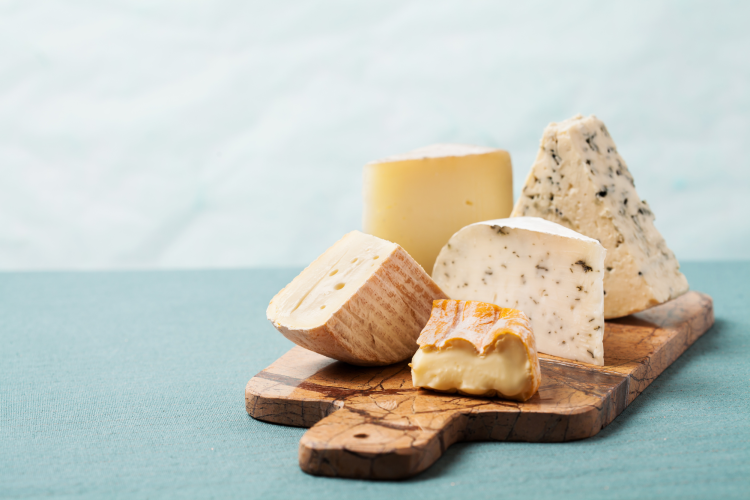
Gruyère cheese is an excellent addition to any cheese board. Its nutty, slightly salty taste pairs wonderfully with fruits like apples, pears or grapes, and complements a variety of crackers and nuts.
Game Day Foods
For Super Bowl snacks, Gruyère adds that extra touch of flavor. Melt it into creamy dips or stuff it inside homemade soft pretzels for a decadent twist on a classic favorite.
Recipes With Gruyère Cheese
Cheese Fondue
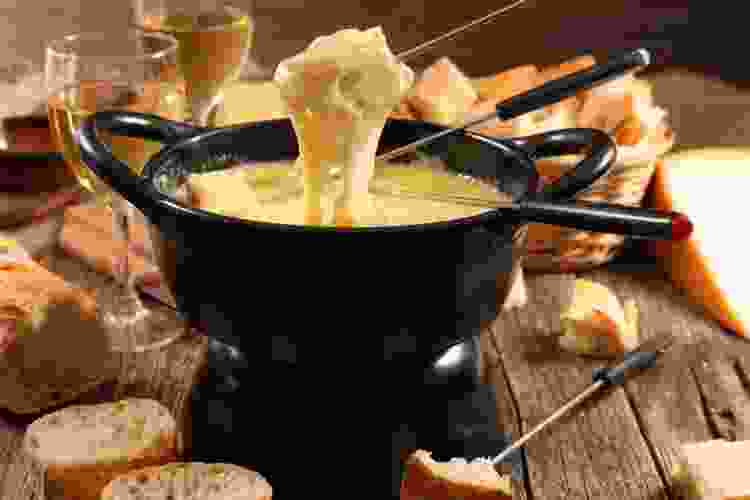
Gruyère cheese fondue is the ultimate melted cheese experience. Traditionally served in a pot over a small stove, it’s a social dish where everyone gathers around, dipping pieces of bread into the warm, gooey cheese with long forks. This Swiss classic became a big hit in America during the 1960s and is still loved today. To prepare it, you gently heat wine in a fondue pot, stir in a little flour, then slowly add the cheese. Finish by seasoning with a pinch of nutmeg and salt.
Macaroni and Cheese
Few dishes are as comforting as a bowl of creamy Gruyère mac and cheese. It’s a simple dish that’ll seriously impress your guests, and all you need is shredded Gruyère cheese to turn regular mac and cheese into the star of the meal.
Stuffed Tomatoes with Gruyère Cheese
Tomatoes filled with tasty ingredients are one of life's small joys. In this recipe, Gruyère cheese is combined with white breadcrumbs, milk, garlic, fresh herbs, onions, black pepper and eggs to create a savory, satisfying dish.
Gruyère is a favorite in many gourmet dishes due to its rich, nutty flavor and smooth texture. If you're interested in learning how to cook with Gruyère cheese, consider taking cooking classes in Atlanta, cooking classes in the Bay Area, cooking classes in New Orleans or even online cooking classes.
Gruyère Cheese Pairings
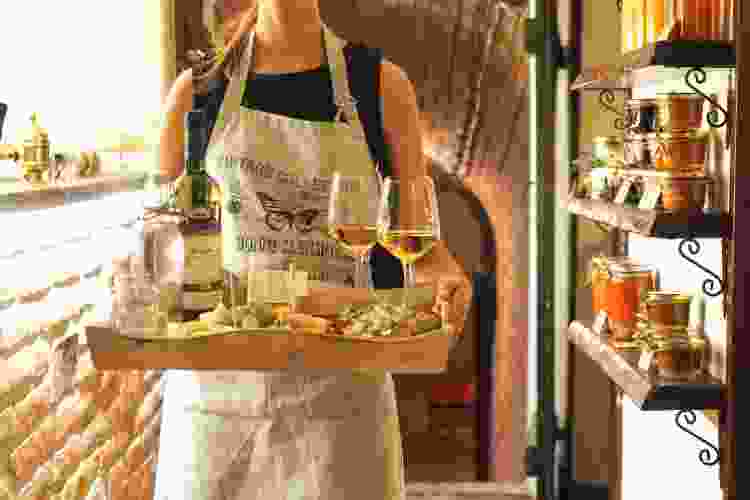
Gruyère's smooth, nutty flavor pairs beautifully with a variety of wines and beers. For white wine lovers, try Pinot Grigio, dry Riesling or Chardonnay; they help bring out the fruity notes of the cheese. For red wine lovers, a light red like Pinot Noir highlights Gruyère’s rich and nutty side.
When it comes to beer, crisp pilsners and hoppy brews make excellent pairings. If you’re looking for something different, sparkling ciders — both alcoholic and non-alcoholic — pair wonderfully with Gruyère cheese. If you’re in the mood for something stronger, Gruyère pairs nicely with Madeira, Scotch, rye whiskey or port.
These pairings add a sophisticated touch to any gathering, making them perfect for brunch party ideas or casual get-togethers where guests will appreciate having something special.
Health Benefits of Gruyère Cheese
Gruyère cheese isn’t just delicious; it’s also packed with nutrients. A typical slice contains around 117 calories, with 31% fat, 69% protein and no carbohydrates. It's a good source of vitamins A, K, B12 and C, as well as essential minerals like calcium and iron. Gruyère cheese is also rich in thiamine and riboflavin and thanks to its low carb content, it’s a good option for people managing diabetes or following a keto diet.
How to Make Gruyère Cheese at Home

Making Gruyère at home is a rewarding project for cheese lovers, but it’s quite the process and will be a labor of love. If you're up for the challenge, you’ll need fresh cow’s milk, a cheese culture, rennet and plenty of patience, as true Gruyère requires months of aging.
Just like most types of cheese, storage is quite simple; make sure the ventilation in your ripening box is adequate and the humidity levels are low. You'll also want to place it on a wooden tray and wrap it in clean parchment paper to preserve the delicate flavors.
Once ready, Gruyère cheese, shredded fresh off the block, is perfect for cooking or snacking. If you don’t have time to age your own cheese or need a quicker option, using a Gruyère cheese substitute like Emmental cheese or Jarlsberg can give you a similar rich, nutty flavor in recipes.
Where to Buy Gruyère Cheese
Specialty cheese shops often have the best selection of Gruyère cheese, but many supermarkets, including Walmart, also carry it for convenient shopping. Standout options include the La Gruyère Reserve, available at Whole Foods Market and the 1655 brand is available on Amazon.
When comparing options, remember that the price of Gruyère cheese often reflects the quality and the traditional process behind it. Ideally, look for the AOP label, which guarantees the cheese comes from the right region and is made using strict traditional methods. Authentic Gruyère is aged in caves or under conditions that closely mimic cave-like temperatures and humidity, contributing to its unique flavor.
One standout variety is Le Gruyère d'Alpage AOP, produced only from May to late September. During this period, cows graze at higher altitudes, imparting a distinct flavor to the cheese. Because the production season is short, fewer cheesemakers create this variety, which results in a higher price. However, the exceptional taste makes it well worth the cost.
Gruyère Cheese FAQs
What Cheese Is Gruyère Similar To?

If you’re looking for a Gruyère cheese substitute, try Emmental, another semi-hard, yellow Swiss cheese, or consider Jarlsberg, raclette cheese or Beaufort.
Is Gruyère the Same as Mozzarella?
Not at all, Mozzarella and Gruyère are very different. Mozzarella is soft, moist and mild, while Gruyère is firmer, drier and has a stronger, richer flavor.
What Is Gruyère Cheese Best Used For?
Although famous as an ingredient in French onion soup and fondue, Gruyère cheese is also great with crackers, fruit, bread and pecans. It also pairs nicely with meats like ham, salami and prosciutto and is a key ingredient in chicken cordon bleu.
What Is So Special About Gruyère Cheese?
Unlike many other Swiss cheeses, Gruyère has very few holes (called "eyes"). While most Swiss cheeses are known for their large holes, Gruyère is different due to its unique production process. The cheese is made slowly, with controlled heating and precise curd cutting. As a result, Gruyère has a firmer texture and a more complex, nutty flavor compared to other Swiss cheeses.
How Do You Pronounce Gruyère?
Gruyère pronunciation is easier than it sounds. It’s said like "groo-YAIR." For a quick listen, you can find an audio clip on Merriam-Webster’s website.
A Touch of Alpine Magic
Gruyère cheese is a standout addition to any kitchen, and you don’t need to visit Switzerland to enjoy it. It’s widely available at grocery stores, including options at Walmart, as well as specialty cheese shops. Pick up a wedge along with some complementary foods like crusty bread and fruit preserves to create a thoughtful gift for foodies — they’ll love the opportunity to savor this centuries-old cheese at home.
For even more fun foodie ideas, check out other experiences happening on Classpop!

